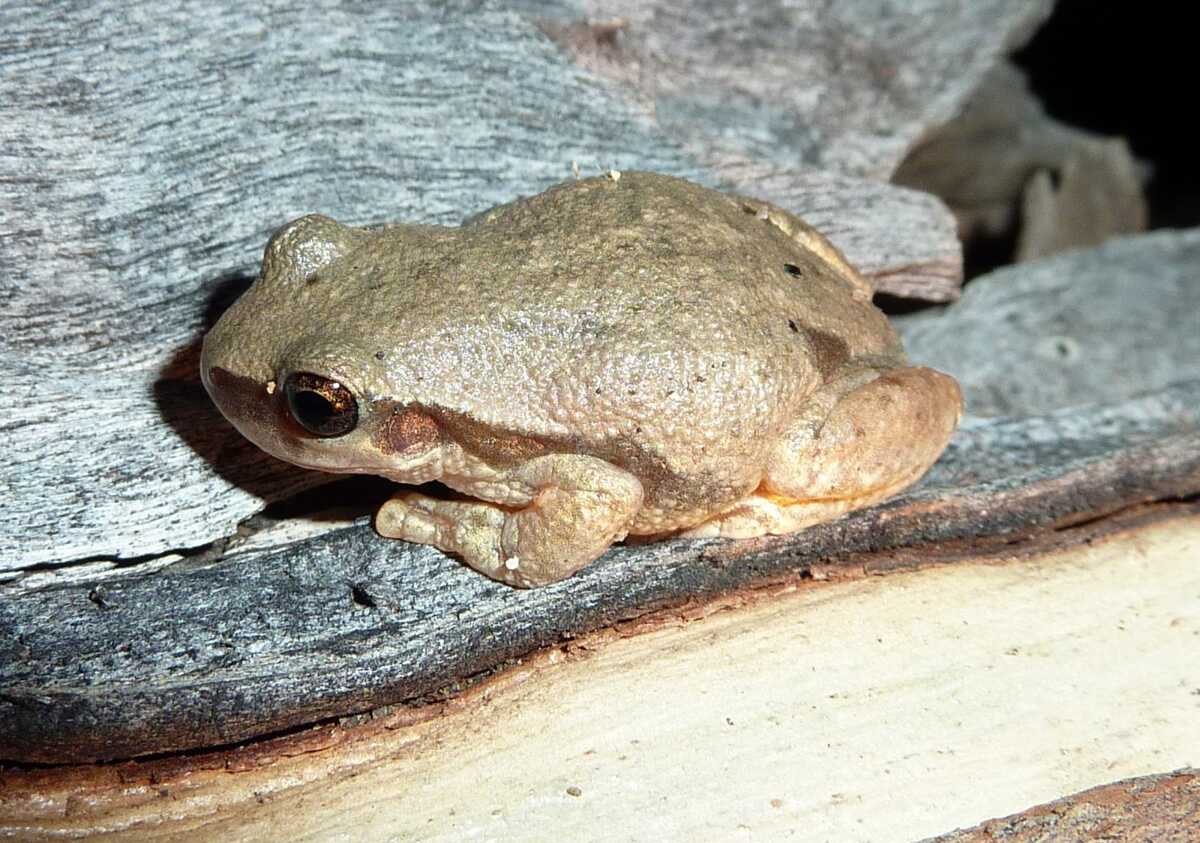Although Central Australia has a really dry climate, there are some interesting frog species living in it. Tread lightly and keep an eye out.
Endemic to Western and Central Australia, this species (Ranoidea maini) can be seen near temporary bodies of water as well as open grasslands, less dense forests and swamps. The name "Main's Frog" comes from Professor Bert Main of the University of Western Australia. This frog absorbs water into its body and burrows underground and gets into a cocoon to be able to live through the drier parts of the year. After some decent rain, it gets back up and then repeats the process. The species' distinctive feature is the desaturated line along its spine. Learn more at https://en.wikipedia.org/wiki/Main's_frog
This frog (Cyclorana cultripes) is endemic to Australia and naturally resides in intermittent rivers/freshwater marshes and arid lowland grasslands. The toes of the species are only 33% webbed, and the fingers are not webbed at all. They breed in the middle of the summer season as the males call the females from the edges of flooded grasslands. Learn more at https://en.wikipedia.org/wiki/Knife-footed_frog
This frog (Ranoidea caerulea) is also called the White's tree frog or the dumpy tree frog. The former name comes from John White himself, as he first described this species in 1970. Native to Australia and New Guinea, this frog is bigger than the majority of the frogs in Australia (10cm+). Due to their antibacterial and antiviral skin discharge, they have managed to preserve their numbers as other amphibian species experienced declines in population. Over their eyes, they have a fatty area that can be used to identify them. Learn more at https://en.wikipedia.org/wiki/Australian_green_tree_frog
Photo by Robert Myers (CC BY 3.0)

Also known as the little red frog, this species (Litoria rubella) is native to Australia, New Guinea and Timor. This frog is one of the most adaptive tree frog species as it can survive in dry, tropical and temperate climates. The ones residing in tropical or temperate zones breed every summer or wet season, yet the desert dwellers breed anytime it rains. Learn more at https://en.wikipedia.org/wiki/Desert_tree_frog
Photo by Christopher Watson (CC BY-SA 3.0)

Endemic to Australia, this species (Crinia deserticola) typically live in arid/moist savannas. It has a distinct melodic call that makes it quite easy to identify. The males call from under the plants or the edges of water. Learn more at https://en.wikipedia.org/wiki/Desert_froglet
A species endemic to Australia, the deserted spadefoot toad (Notaden nichollsi) is underground most of the year and only comes back up after decent rainfall to eat & reproduce. The males call for the females as they float. The tadpoles of the species develop swiftly as they undergo metamorphosis only for about 14 days. Learn more at https://amphibiaweb.org/species/3538
Native to Western and Central Australia, this species (Opisthodon spenceri) has a strong "rotten" smell, attracting different insects around it. It has big eyes combined with a small head. Colour-wise, the species can differ vastly. Learn more at https://en.wikipedia.org/wiki/Spencer's_burrowing_frog